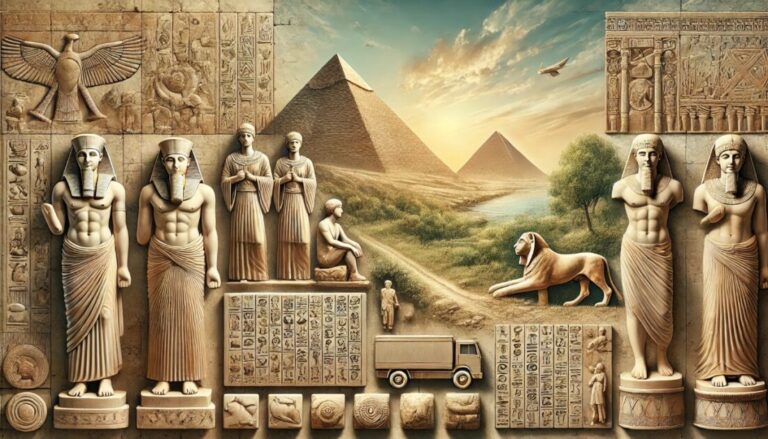Introduction
The term “ancient artz” encompasses the rich tapestry of artistic expressions from bygone civilizations. These art forms serve as a window into the past, revealing the beliefs, customs, and daily lives of ancient peoples. This article delves into the various aspects of ancient artz, highlighting its significance, techniques, and enduring legacy.
Understanding Ancient Artz
Ancient artz is not merely about the aesthetics of art; it represents a vital historical record. It includes sculptures, pottery, murals, and textiles created by ancient civilizations such as the Egyptians, Greeks, Romans, and Mesopotamians. Each piece tells a story, reflecting the culture, values, and technological advancements of its time.
The Importance of Ancient Artz
Ancient artz provides insight into the spiritual and social dynamics of early societies. For example, the elaborate tomb paintings of ancient Egypt reveal not only the importance of the afterlife but also the daily activities and beliefs of the living. Similarly, the intricate pottery designs from the Minoan civilization illustrate their connection to nature and mythology.
Major Civilizations and Their Contributions
Egyptian Art
Egyptian art is perhaps one of the most recognizable forms of ancient artz. It is characterized by its adherence to specific rules of proportion and symmetry. The iconic hieroglyphs and depictions of gods and pharaohs convey messages of power and divinity.
Techniques and Materials
Artists used various materials, including stone, wood, and gold, to create their masterpieces. The use of vibrant colors derived from natural minerals has helped preserve these works for millennia. Temples and tombs adorned with intricate carvings and paintings served both religious and funerary purposes.
Greek Art
Greek art significantly influenced the development of Western art. Renowned for its emphasis on humanism, Greek art celebrates the human form and its beauty. From the statues of gods to the realistic portrayals of athletes, the Greeks mastered the techniques of sculpture and painting.
Innovations in Style
The evolution from the rigid forms of the Archaic period to the dynamic poses of the Hellenistic era showcases the Greeks’ innovative spirit. Techniques such as contrapposto in sculpture allowed for more naturalistic representations of the human body.
Roman Art
Roman art borrowed heavily from Greek traditions but added its unique elements, particularly in architecture and engineering. The use of concrete allowed Romans to build monumental structures such as the Colosseum and aqueducts.
Public Art and Propaganda
Roman art often served political purposes. Emperors commissioned statues and reliefs to convey their power and achievements. The extensive use of frescoes in public buildings also illustrates the importance of art in civic life.
Mesopotamian Art
The art of Mesopotamia is characterized by its use of clay and the development of cuneiform writing. The Ziggurat of Ur and the Ishtar Gate are exemplary of the architectural innovations of the Sumerians and Babylonians.
Cultural Symbols
Mesopotamian art often included motifs that represented deities, animals, and daily life. The use of cylinder seals to stamp images onto clay documents shows the interplay between art and administration in ancient societies.
Techniques and Materials in Ancient Artz
Sculpture
Sculpture has been a significant medium throughout ancient artz. Carved from materials such as marble, stone, and bronze, sculptures served both decorative and functional purposes. The skill involved in creating lifelike figures speaks to the advanced techniques developed by ancient artists.
Painting
From the vibrant frescoes of Pompeii to the detailed wall paintings in Egyptian tombs, painting was a primary form of expression in ancient artz. Techniques varied by culture, but the use of natural pigments was common across civilizations.
Pottery
Pottery provides a unique glimpse into daily life. The shapes and designs of ancient vessels tell us about the functions they served, from storage to ritual use. The craftsmanship involved in creating pottery reflects the technological advancements of the time.
The Enduring Legacy of Ancient Artz
Influence on Modern Art
Ancient artz continues to inspire contemporary artists. The themes of beauty, mythology, and human experience resonate through time. Modern sculptures, paintings, and installations often draw from the techniques and motifs established by ancient civilizations.
Preservation and Study
Efforts to preserve ancient artz have led to the establishment of museums and archaeological sites. Scholars study these works to better understand the cultural contexts from which they emerged. Preservation techniques have evolved, but the goal remains the same: to protect these invaluable artifacts for future generations.
Cultural Heritage
Ancient artz is a vital part of our cultural heritage. It connects us to our ancestors and reminds us of the shared human experience. As we face modern challenges, the wisdom embedded in these ancient works can provide guidance and inspiration.
Also Read: WWE SmackDown Episode 1488: A Night of Surprises and Showdowns
Conclusion
The exploration of ancient artz reveals a rich history filled with creativity and innovation. Each civilization contributed to a greater understanding of humanity through its art forms. As we study these ancient masterpieces, we not only celebrate their beauty but also honor the legacies of the cultures that created them. The journey through ancient artz is a reminder of our interconnectedness and the timeless pursuit of artistic expression.


